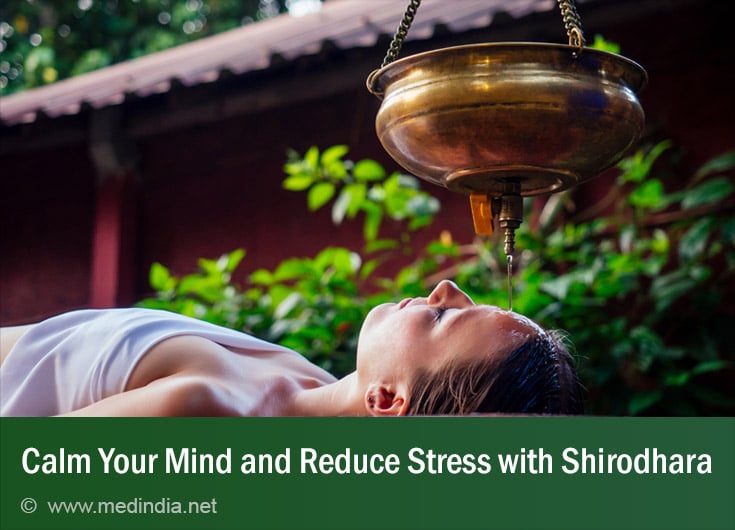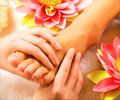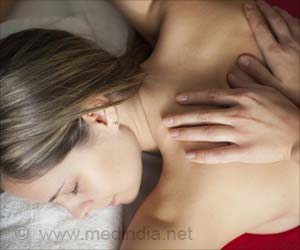- A Critical Review of Abhyanga with Special Reference to its Contemporary Relevance - (https://www.jpsionline.com/articles/a-critical-review-of-abhyanga-with-special-reference-to-its-contemporary-relevance.pdf)
- Impact of Shirodhara on biological markers of stress: A case study - (https://pubmed.ncbi.nlm.nih.gov/33637424/)
- Padabhyanga; Kansa Thali Foot Rub - (https://ijnmronline.com/AbstractView.aspx?PID=2024-3-1-10)
- Gharshana Karma for the Management of Vyanga - (https://www.researchgate.net/publication/342945150_GHARSHANA_KARMA_FOR_THE_MANAGEMENT_OF_VYANGA)
About
Ayurvedic massages - an ancient wellness practice designed not just to relax but to heal your body, mind, and soul. Yes, we are talking about that traditional Indian therapy your friends might have raved about. But Ayurvedic massages are more than just pampering sessions. They offer a range of health benefits that go beyond the skin-deep. Curious to know how? Let’s dive in!
Did You Know?
Ayurvedic massages have been used for over 5,000 years and are still a staple in Kerala's traditional healthcare system. In fact, people from all over the world travel to Kerala to experience authentic Ayurvedic therapies! #ayurvedicmassages #medindia
What is Ayurvedic Massage?
To put it simply, Ayurvedic massages are an integral part of Ayurveda, a 5,000-year-old system of medicine that originated in India. Unlike conventional massages that focus primarily on muscle relief, Ayurvedic massages aim to balance your entire being- body, mind, and spirit- using specific techniques and herbal oils. Each massage is tailored to the individual's dosha (body constitution), helping to restore balance and promote overall well-being.
The use of herbal oils is central to Ayurvedic massages. These oils are infused with medicinal herbs that not only nourish the skin but also help to detoxify and rejuvenate the body. Ayurveda strongly believes in the healing properties of oils, which penetrate deep into the tissues, improving circulation, and easing stress and anxiety.
Types of Ayurvedic Massages
Wondering what type of Ayurvedic massage is best for you? There are several kinds, each offering unique benefits depending on what your body needs. Here are some of the most popular:
Abhyangam
Abhyangam is the classic full-body Ayurvedic oil massage. It is performed using generous amounts of warm, medicated oils chosen according to your dosha. This technique not only nourishes the skin but also improves circulation, helps eliminate toxins, and relaxes the muscles. Abhyangam is often recommended for relieving stress, anxiety, and promoting overall well-being(1✔ ✔Trusted Source
A Critical Review of Abhyanga with Special Reference to its Contemporary Relevance
Go to source).
Shirodhara
Ever dreamt of a continuous stream of warm oil being gently poured onto your forehead? That’s Shirodhara. This massage targets your third eye, which according to Ayurveda, is the gateway to your consciousness. It's excellent for calming the mind, reducing mental stress, and even improving sleep(2✔ ✔Trusted Source
Impact of Shirodhara on biological markers of stress: A case study
Go to source).
Padabhyanga (Ayurvedic Foot Massage)
Your feet have reflex points that connect to different parts of your body. In Padabhyanga, your therapist focuses on massaging the feet with herbal oils, which improves blood circulation, relaxes the muscles, and helps balance your body’s energy flow(3✔ ✔Trusted Source
Padabhyanga; Kansa Thali Foot Rub
Go to source). It is particularly beneficial for people who experience chronic fatigue or stress.
Garshana
This is a dry massage that uses raw silk gloves, rather than oil. It helps stimulate the lymphatic system, exfoliates dead skin cells, and leaves your skin glowing. Garshana is a great choice if you are looking to enhance circulation and improve your skin texture(4✔ ✔Trusted Source
Gharshana Karma for the Management of Vyanga
Go to source).
Health Benefits of Ayurvedic Massage
If you think Ayurvedic massages are just about relaxation, you’re in for a surprise. The benefits of Ayurvedic massages are numerous, and they extend far beyond simple muscle relief. Here’s why they are worth adding to your wellness routine.
Stress and Anxiety Relief
In today’s fast-paced world, stress has become almost unavoidable. Ayurvedic massages like Abhyangam and Shirodhara help in reducing stress and anxiety by calming the nervous system and encouraging a sense of deep relaxation. These massages also help balance your body’s natural rhythms, improving both your physical and emotional health.

Skin Nourishment and Moisturizing
Ayurvedic massages are not just about the body- they are great for your skin too! The herbal oils used in these massages deeply penetrate the skin, providing much-needed nourishment and moisturization. Regular Ayurvedic massages can improve skin texture, combat dryness, and make your skin glow.
Detoxification
One of the core beliefs of Ayurveda is that toxins, or "ama," accumulate in the body, leading to various health issues. Ayurvedic massages help remove these toxins through improved blood circulation and lymphatic drainage. This detoxification process not only boosts your immune system but also enhances your overall well-being.
Improved Sleep
If you're dealing with insomnia or disturbed sleep, Ayurvedic massages can be a game-changer. Techniques like Shirodhara help calm the mind and promote deep, restful sleep. The use of specific oils in head massages can also induce relaxation, making it easier for you to drift off at night.
Relief from Aches and Pains
Ayurvedic massages, especially the ones focusing on joints and muscles, are excellent for people dealing with chronic pain. Whether it is back pain, arthritis, or stiff muscles, the herbal oils used in Ayurvedic massages have anti-inflammatory properties that provide relief from pain and discomfort.
Ayurvedic Massages for Changing Seasons
Ayurveda emphasizes the importance of adjusting your wellness routine with the seasons. Ayurvedic massages can be tailored to meet the changing needs of your body during different times of the year. For instance:
- In winter, warming oils like sesame oil are used to counteract the cold and dryness.
- In summer, cooling oils like coconut or sandalwood are applied to calm the body and reduce inflammation.
- During the rainy season, detoxifying oils are often recommended to expel excess moisture and humidity from the body.
This seasonal approach ensures that your body stays in balance, no matter what time of the year it is.









